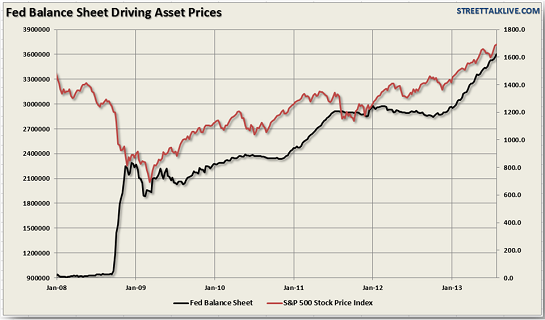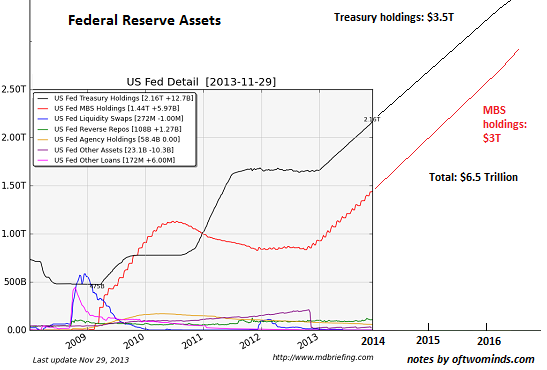“The more things change, the more things stay the same. The Great Depression actually started in 1929, but as you will see below, as late as 1933 the Associated Press was still pumping out lots of news stories with optimistic economic headlines and many Americans still did not believe that we were actually in a depression. And of course we are experiencing a very similar thing today. The United States is in the worst financial shape that it has ever been in, our economic infrastructure is being systematically gutted, and poverty is absolutely exploding. Since the stock market crash of 2008, the Federal Reserve has been wildly printing money and the federal government has been running trillion dollar deficits in a desperate attempt to stabilize things, but in the process they have made our long-term economic problems far worse. It would be hard to overstate how dire our situation is, and yet the mainstream media continues to assure us that everything is just fine and that happy days are here again.
As I have already noted, the mainstream media was doing the exact same thing back during the days of the Great Depression. The following are actual Associated Press headlines from 1933…
“Decisive Break from Panic Shown in Business Figures”
“Markets Spurt To New Highs”
“New Farm Bill to End Depression”
And the following is a headline discovery from 1933 that was made by Linda Goin…
I was browsing through old newspapers the other day and discovered a page filled with news about the stock market and banks in the Daily Capital News from Jefferson City, Missouri. The date was March 15, 1933, well into the Great Depression, and the news was cautiously celebratory as a headline read, “Era of Fear is Declared at End Now.”
The Depression-era classic song entitled “Happy Days Are Here Again” was played at the Democratic National Convention in 1932 and it went on to be featured by the Democrats for many years after that. The following is an excerpt from a Wikipedia article about that song…
Today, the song is probably best remembered as the campaign song for Franklin Delano Roosevelt’ssuccessful 1932 presidential campaign. According to TIME magazine, it gained prominence after a spontaneous decision by Roosevelt’s advisers to play it at the 1932 Democratic National Convention, and went on to become the Democratic Party‘s “unofficial theme song for years to come”.
There is only one huge problem.
The election of Roosevelt didn’t end the depression. Years of bitter economic suffering and dust bowl conditions were still ahead. The Great Depression continued all the way up to the start of World War II, and the war years were certainly no picnic for average folks either.
But at least cheery headlines can make people feel better, right?
That is what some believe.
Others believe that giving people false hope is very cruel and that it sets up people for failure.
The following are some actual headlines that were found on mainstream news sites today…
CNBC: “Recession risk gone in all US states but 1: Moody’s Analytics”
CNN: “Foreclosure crisis is drawing to a close”
NBC News: “Stocks close near highs; S&P logs 7-day rally”
Wow, those headlines sound great!
So are happy days here again?
Not quite.
In fact, things continue to get even worse in a whole host of ways. Just consider the following statistics…
-According to a brand new Gallup poll that was just released, 20.0% of all Americans did not have enough money to buy food that they or their families needed at some point over the past year. That is just under the record of 20.4% that was set back in November 2008.
-Gallup also found that the ability of American families to meet some of their other most basic needs is near an all-time low…
The Basic Access Index, which includes 13 questions about topics including Americans’ ability to afford food, housing, and healthcare, was 81.4 in August, on par with the all-time low of 81.2 recorded in October 2011.
–More than 90 million working age Americans are considered to be “not in the labor force”.
-The labor force participation rate is the lowest that it has been in 35 years.
–516,000 Americans “left the labor force” last month. That was a brand new all-time record high.
-The number of private sector jobs dropped by 278,000 last month.
–77 percent of the jobs that have been “created” so far this year have been part-time jobs.
-Approximately one out of every four part-time workers in America is living below the poverty line.
-Right now, 40 percent of all U.S. workers are making less than what a full-time minimum wage worker made back in 1968.
-The U.S. trade deficit with China has hit a brand new record high.
-The U.S. trade deficit with the EU has hit a brand new record high.
-The number of U.S. households on food stamps is at a brand new record high.
-One of the largest furniture manufacturers in America was just forced into bankruptcy…
The maker of furniture brands such as Thomasville, Broyhill, Lane and Drexel Heritage said Monday that it has filed for Chapter 11 bankruptcy protection.
-Total mortgage activity has dropped to the lowest level that we have seen since October 2008.
Yes, those in the top 1 percent are doing very well for the moment thanks to the reckless money printing that the Federal Reserve has been doing.
But for most Americans, the last several years have been a continual struggle. The following is a list that comes from one of my previous articles entitled “44 Facts About The Death Of The Middle Class That Every American Should Know“…”
Full article
Comments »




